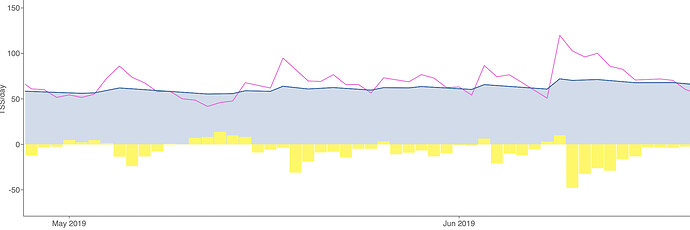Hooray for 6-day stage races this year!
@robertehall1, as I am training for the same type of event (6d MTB stage race), we’re thinking along the same lines. To your thoughts:
-
The 4 day blocks are great in my opinion. Staggering them into specific time frames is smart, and I like how you don’t have one in May. I would assume this is to either plug in a 1-day race or something, or just give the body time to unload from those fatigue blocks? What would these blocks look like for you? Will they be all base rides, or include some intervals of some sort? I would agree that 6 days would require too much recovery and become counterproductive.
-
Doing your LSD ride the day after an interval day would be completely appropriate in my opinion as well. You’re coming into the ride with tired legs (which you will experience in ST6 of course), and you’ll be able to work on fueling and pacing with tired legs.
When I was preparing for the 3-day stage race a few years back, I found that the way I was loading myself due to full-time work got the job done, but it had its drawbacks. In the snip below you can see how there are a number of spikes in the training load (pink lines) and more of a heavy/off approach with Training Stress Balance (TSB, the yellow bars). So this was basically set up where I was doing my normal base riding week to week, but when I had the opportunity I would throw down a huge 1-day ride (e.g., that last spike on the right was a 10 hour ride on the SS MTB). So that happened, and then the focus was on just trying to recover from it.
Did it work? Yes. The race couldn’t have gone any better. My take-away: this was certainly effective because having done a number of brutally hard 1-day rides on the MTB, I was ready for 3 days of more XC style racing even though I never got 2-3 day blocks of hard/long riding in.
Moving into 2020 and being unemployed for the pandemic summer, I was able to apply the training load very differently, below:
Above, you can see a much more gradual progression. TSB (yellow bars) still falls into the negative, but we’re not seeing these massive one-day spikes (pink lines). This was, of course, the pandemic year, so training planning was easier due to the circumstances. Coming out of that season, I was in much better condition to continue riding well and feeling motivated to race, whereas in 2019, once I pulled out of Nats, that was it. I needed to take a bigger rest and motivation was lower. For a one-hit summer race though, that preparation worked fine.
Having learned that, I’m going to pull this consistency from 2020 into the training this year and marry that with some of the things that worked from 2019. Hopefully some of these thoughts can fuel some ideas for your preparation:
- Maintain the consistency and use bike commutes and my foundation of fitness. I have seen good gains in metabolic function from doing 2-a-day rides to/from work where I can extend or shorten as necessary.
- Minimize any massive MTB rides unless it’s just for fun (e.g., soul rides)
- Include some consistent 2-3 day blocks of moderate length rides (e.g., 4-5 hrs/day for 2-3 days instead of 1x 10 hour day)
- As you suggested, definitely maintain the strength training. This, in terms of postural control, is a big focus for me. I know the legs will be tired, and the aerobic conditioning will help them to keep pushing the pedals over. But I’m more concerned with postural control and being able to hold a healthy and comfortable position on the bike hour after hour/day after day. This is to ensure I want to get back on the bike for the next stage.
The last thing I’ll mention is fueling. MTB fueling is different from other disciplines, so while you’re out on your fatigue blocks, be sure to practice the timing of your fueling and hydration, along with accessibility of it. Plan your fuel and fluid ahead of time, and then when you’re back home, do a little download where you can write down what came in and assess how closely you came to your original plan, and just as important, your actual needs for performance.
Thanks for your question, and it will be fun to keep this conversation going as we all prepare for our N1 Challenge events!
Coach Ryan


 … without even looking at the data I can say that to podium in masters in a North American MTB stage race is takes 3-4 hour days at 80-85% of mFTP normalized power.
… without even looking at the data I can say that to podium in masters in a North American MTB stage race is takes 3-4 hour days at 80-85% of mFTP normalized power.